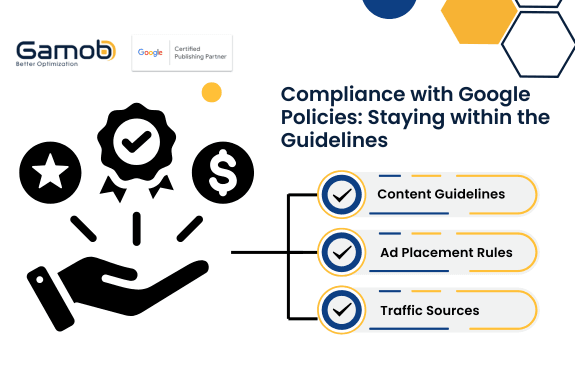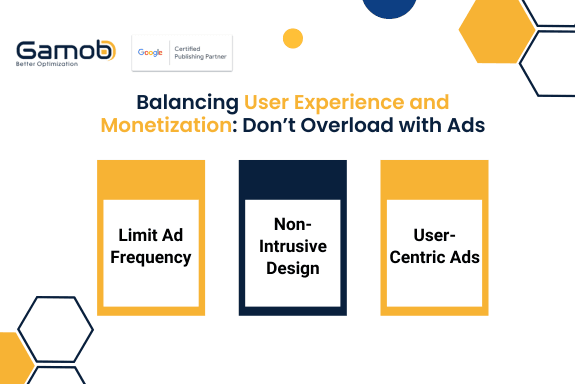Adsense For Search
Google AdSense for Search: Everything You Need to Know Before Getting Started
Tracy Nguyen
January 10, 2025

Subscribe to receive the latest blog posts to your inbox every week.
By subscribing you agree to with our Privacy Policy.
In the world of website monetization, Google AdSense for Search (AFS) presents an intriguing opportunity for publishers to generate revenue by integrating a customized search bar and displaying ads alongside the search results. This powerful tool not only allows website owners to profit from their site's search traffic but also offers users a seamless and relevant search experience. However, before diving into the world of AdSense for Search, it’s important to carefully consider a few key factors to ensure the integration is both effective and user-friendly.
In this post, we’ll explore some important aspects you need to evaluate before implementing AFS on your website, as well as best practices and common mistakes to avoid. Let’s dive into the factors that will help you make the most of AdSense for Search.
1. Compliance with Google Policies: Staying within the Guidelines
One of the first and most important things to keep in mind when implementing any form of AdSense is Google’s strict adherence to its guidelines. Whether you are using AdSense for display ads or AFS, ensuring that your website complies with Google’s content and placement policies is critical to avoid potential penalties or even account suspension.
Google has a comprehensive set of rules that govern the use of AdSense products, particularly concerning the quality of content, user experience, and ad placements. To ensure your AFS integration stays compliant, focus on the following:
- Content Guidelines: Your website must contain original, high-quality content that is not misleading or harmful. Avoid any content that could be considered adult, violent, or promoting harmful practices.
- Ad Placement Rules: Avoid excessive ad placement around the search results or interfering with the content. Overloading the search results with ads may result in penalties.
Traffic Sources: Make sure your traffic comes from legitimate, organic sources. Google is vigilant about suspicious traffic patterns that might indicate manipulation or fraud.
By staying within Google’s policies, you not only ensure a smooth experience for your users but also protect your AdSense account from potential issues down the line.
2. Optimization for Mobile: A Must in Today’s Browsing Environment
With mobile browsing accounting for a large percentage of web traffic, ensuring that your AFS integration is fully optimized for mobile devices is essential. A growing number of users access websites via smartphones or tablets, so your search bar and the resulting ads must work seamlessly across these platforms.
If your search bar or search results display poorly on mobile, this can lead to a frustrating user experience, reducing engagement and ultimately hurting your monetization efforts. Consider the following:
- Responsive Design: Your search bar should automatically adjust to the screen size. Google offers customization tools within AFS that allow you to make the search box mobile-friendly.
- Ad Visibility: Ads displayed alongside search results should also be responsive, ensuring they fit within the mobile screen and are easy to interact with.
- Loading Speed: Mobile users often expect faster load times. Slow search results or delayed ad displays could lead to higher bounce rates, which could hurt both user retention and your AdSense earnings.
Optimizing AFS for mobile not only boosts the overall user experience but also ensures that your site remains competitive in a mobile-dominant world.
3. Balancing User Experience and Monetization: Don’t Overload with Ads
While AdSense for Search can be an effective monetization strategy, it’s crucial to strike the right balance between user experience and revenue generation. Too many ads can lead to a poor user experience and might cause visitors to leave your site, ultimately hurting both your traffic and your revenue.
It’s easy to get carried away with the potential for additional revenue through Adsense for search, but user satisfaction should always remain a top priority. Here are a few ways to maintain a balance:
- Limit Ad Frequency: Avoid overwhelming users with too many ads within the search results. Ensure that ads are placed in strategic locations, where they do not overshadow the content or distract users from finding the information they need.
- Non-Intrusive Design: Make sure your ads do not cover essential content or disrupt the search flow. For example, ads placed at the top of the results page or in the sidebar are usually more acceptable, as long as they don’t interfere with the user’s main purpose: finding information.
- User-Centric Ads: Customize your ads based on the user’s search query or behavior. Ads that align with what the user is searching for are less likely to be perceived as intrusive.

By thoughtfully integrating ads and placing them in a way that complements your website's design and function, you can keep your users happy while also earning revenue.
4. Target Audience Analysis: Personalize the Experience
To maximize the effectiveness of AdSense for Search, it’s essential to understand your audience’s behavior and preferences. Analyzing search data can provide invaluable insights into what your visitors are looking for, allowing you to better tailor your content and ad placements.
The following tools and strategies can help you better understand your target audience:
- Google Analytics: By integrating Google Analytics with your site, you can track user behavior, identify popular search queries, and monitor how users interact with your search bar.
- Search Query Analysis: Regularly analyze search queries within the AFS interface to identify trends and common search patterns. This data can help inform your content strategy and improve your website’s relevance to users.
- A/B Testing: Test different ad placements, search bar designs, and search result layouts to find the best combination that both enhances the user experience and increases ad performance.
A deeper understanding of your audience will allow you to fine-tune both your content and your monetization strategy, ensuring a better experience for your users and more revenue for your site.
Applying Adsense for search is not hard but you may be violated if you don’t really know about AFS; even though losing money. By avoiding these common mistakes, publishers with websites can unlock the full potential of AdSense for Search. Focus on understanding user intent, balancing ad placement, optimizing for mobile, monitoring performance, and prioritizing UX design. These strategies will not only boost your revenue but also enhance your site’s value to users.
At Gamob, we specialize in helping publishers like you succeed with AFS. Whether you’re just starting or looking to optimize, our team is here to guide you every step of the way. Let’s work together to transform your powered website into a monetization powerhouse.
---------------------
Gamob | GCPP - Empower your monetization journey
- Email: [email protected]
- Website: www.gamob.com
- Linkedin: www.linkedin.com/company/gamob-gcpp